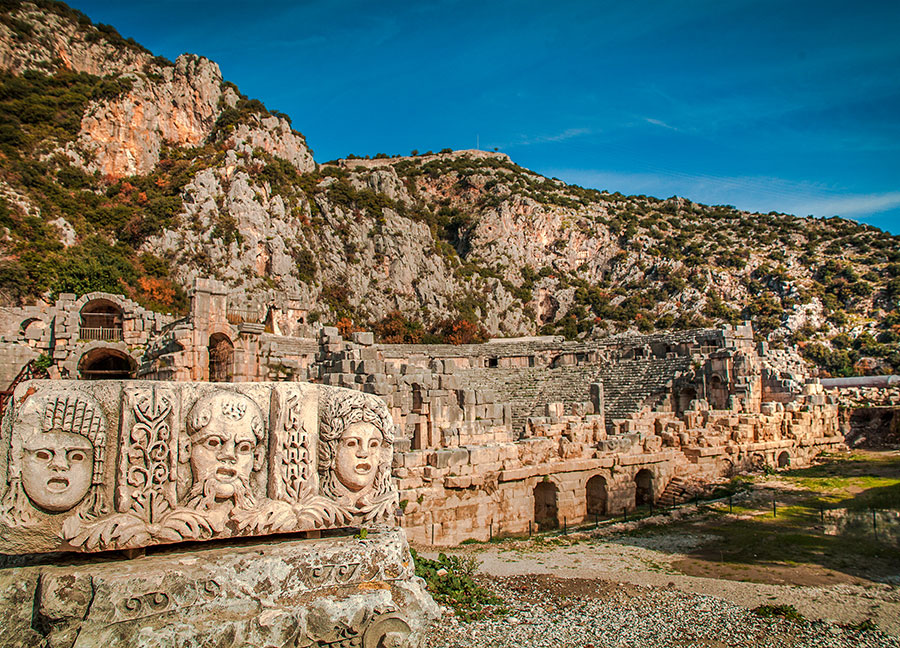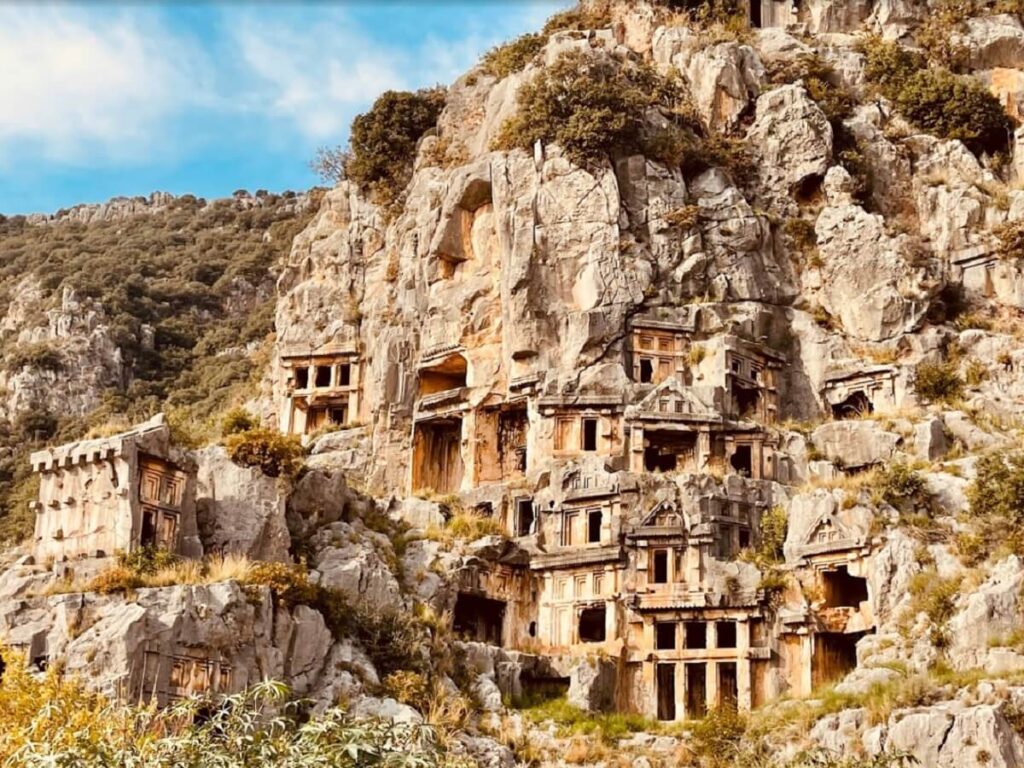Nestled within the heart of Antalya’s Demre District lies the ancient city of Myra, a captivating archaeological site that boasts a rich tapestry of history spanning several centuries. Known for its remarkable Lycian-era rock tombs, well-preserved Roman theatre, and the Byzantine-era Church of St. Nicholas, Myra offers an extraordinary glimpse into the past. In this article, we will delve into the historical significance of Myra, exploring its development, key architectural marvels, and the profound influence it has had on both regional and religious history.
A City of Historical Significance
The ancient city of Myra, founded on the plain that shares its name, was strategically connected to the sea through a canal located to the west of the Myros River, known today as the Demre Stream. This connection facilitated maritime trade and transportation, with the port of Andriake (modern-day Çayağzı) serving as the city’s primary gateway to the sea. Historical records, including those of the geographer Strabo, indicate that Myra was one of the six major cities of the Lycian League, known in Lycian inscriptions as “Myrrh.” Archaeological evidence, including rock tombs, inscriptions, and coins, suggests that Myra has been a significant settlement since at least the 5th century BCE.

Architectural Marvels of Myra
One of Myra’s most striking features is its collection of Lycian-era rock tombs, which showcase the region’s unique architectural style. These tombs, some of which are intricately carved with reliefs depicting the deceased and their families, are among the finest examples of Lycian craftsmanship. The tombs, often designed to resemble wooden houses, are positioned on the southern slopes of the acropolis, providing a breathtaking view for visitors.
Another key structure in Myra is the Roman theatre, located at the southern foot of the acropolis. This well-preserved theatre, with its rows of stone seats and standing stage building, reflects the grandeur of Roman architecture. The theatre’s stage building remains intact up to the second floor, offering a glimpse into the engineering prowess of the ancient Romans.

Myra in the Byzantine Era
During the Byzantine period, Myra emerged as a significant administrative and religious center. It was during this time that the city gained fame as the home of St. Nicholas, better known as Santa Claus, who served as the bishop of Myra in the 4th century CE. St. Nicholas’s legacy continues to be a focal point of the city’s history, with a church built in his honor after his canonization.
Despite its prominence, Myra’s fortunes began to wane in the 7th century due to a series of natural disasters, including earthquakes and floods, as well as Arab raids. By the 12th century, the once-thriving city had diminished in importance, transforming into a small village.

Preservation of Myra’s Ruins
Today, the ruins of Myra stand as a testament to its storied past. Visitors to the site can explore remnants of Hellenistic and Roman-period walls on the acropolis hill, as well as the early Roman brick architecture seen in the remains of the city’s baths. The city’s water supply system, which utilized channels carved into the rock alongside the Demre Stream, further highlights the advanced engineering skills of Myra’s inhabitants.

The ancient city of Myra was also deeply connected to its religious heritage, as evidenced by the coins minted in the city. These coins often depicted the city’s mother goddess, Artemis, in the form of Cybele, one of Anatolia’s oldest deities. This connection to ancient religious practices underscores Myra’s importance within the Lycian League, where it held significant influence, as indicated by its status as one of six cities with three voting rights.
Conclusion
The ancient city of Myra, with its rich historical legacy and architectural splendor, remains a captivating site for history enthusiasts and archaeologists alike. From its origins as a powerful Lycian city to its prominence during the Byzantine era, Myra’s enduring significance is reflected in the ruins that stand today. As the city where St. Nicholas once lived and where ancient engineering and religious practices flourished, Myra offers a unique window into the past, inviting visitors to explore its timeless beauty and historical importance.

